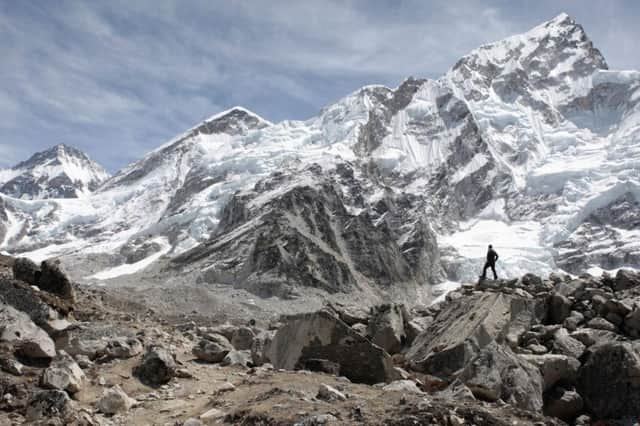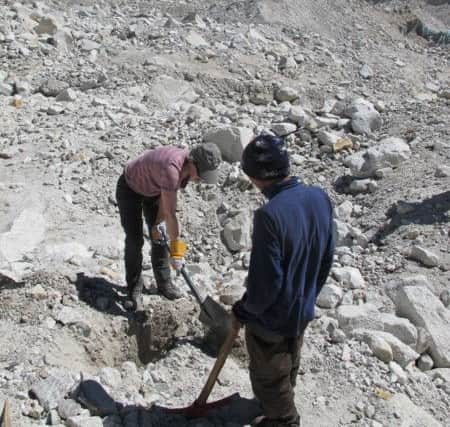How a Yorkshire team hopes to tame Everest with a car wash


At an altitude of more than 5000m, the 10-mile long Khumbu glacier, on the edge of Mount Everest in Himalayan northeastern Nepal, is the highest in the world. It is the permanent home to no-one humans, let alone automobiles, and if its terrain is familiar at all, it is most likely from the 2015 film Everest, which managed to get a second unit camera team there.
Yet two months from now, the glacier may finally have given up some of its secrets.
Advertisement
Hide AdAdvertisement
Hide AdA team of scientists, led by a climate change expert from Leeds, has chosen Easter Day to embark on an epic trip during which they hope to penetrate ice more than 200 yards thick, in order to study a buried geological structure that could help mitigate the effects of global warming.


Their principal tool for an exercise never previously attempted will be an adapted car wash unit, powered by three Honda generators.
On paper, they carry enough pressure to cut through Tarmac. But, geomorphologist Dr Duncan Quincey acknowledged, it remained to be seen how they would perform in an environment with so little oxygen.
“We’re drilling 200m deep and if we get anywhere near, it will be real discovery science,” he said. “No one has done anything like this before.”
Advertisement
Hide AdAdvertisement
Hide AdThe expedition could not be more timely. Some 40 per cent of the world’s population, in and around the Indian subcontinent, depends on melting water from the Himalayan glaciers for irrigation, power and sanitation. But the Khumbu glacier alone is shrinking by 20m a year, and the resulting lakes and sediment dams represent a perpetual threat of flash floods. In 2014, a block of ice the size of an office building was dislodged from Khumbu, killing 16 Sherpas.


“All the current data collected on these glaciers only just scratches the surface,” said Dr Quincey, who is based at Leeds University.
“The data we will collect during this expedition is critical for us to be able to forecast how this glacier, as well as others in the region, will respond to climate change.”
The car wash unit was adapted by his colleague, Professor Bryn Hubbard, from Aberystwyth University. He said: “Understanding what actually happens inside these glaciers is critical to developing a better understanding of how they flow so that we can better predict when dams that form on them are likely to be breached, releasing vast volumes of water to the valleys below.”
Advertisement
Hide AdAdvertisement
Hide AdHe added: “This is a real risk in the Himalayas as it is in other regions such as the Andes, and has the potential to endanger the lives of thousands of people.”
The team’s drilling and measurement equipment weighs around 1.5 tonnes, and will be carried to the glacier by helicopter, yak and locally-hired Sherpa.
Professor Hubbard said: “Working in the field is challenging at best, but this mission presents some particular challenges. We don’t know how well our equipment will perform at altitude, let alone how we will be able to contend with the thin air.”
As the airlift gets underway, the expedition team will acclimatise by trekking the eight-day route from Nepal’s Tenzing–Hillary Airport, named after the first men to reach the summit of Everest, in the spring of 1953.